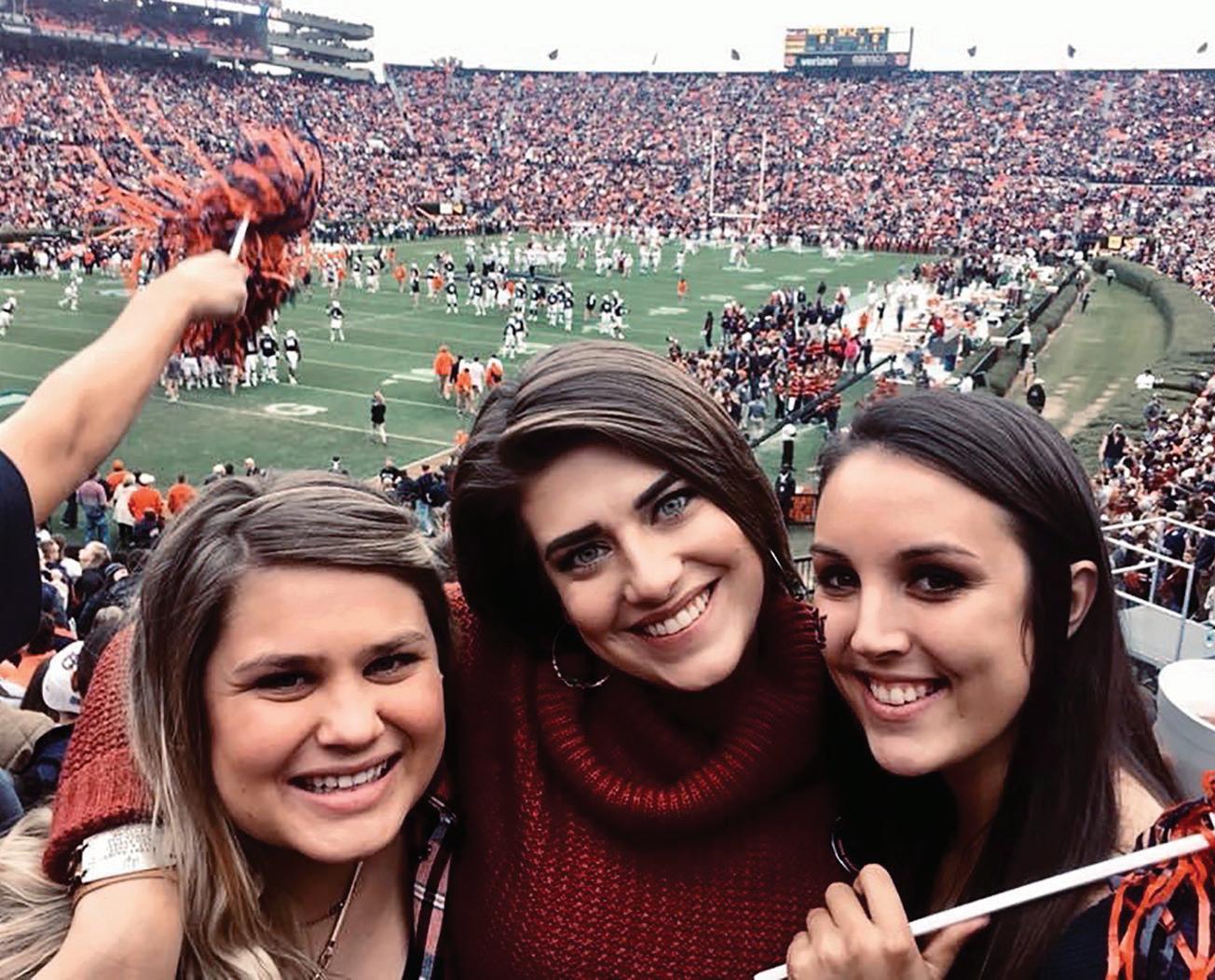
32 minute read
Stadium snapshots
My husband Ronnie and I went to our first Alabama
game back in 2015. Roll Tide! SUBMITTED BY Elizabeth (Beth) Bonner, Monroeville.
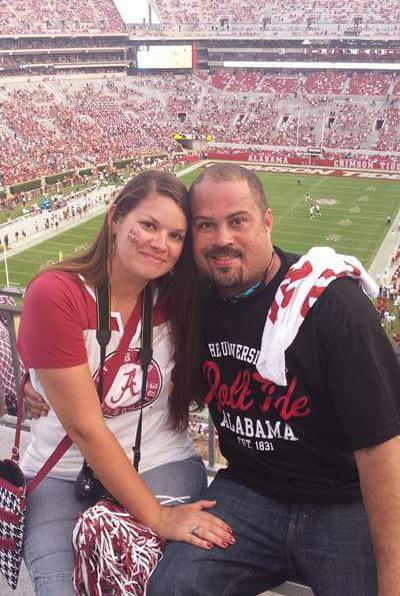
Sorority sisters Tanner, Savannah, and Brooke enjoy the Iron Bowl in
Jordan-Hare Stadium. War Eagle! SUBMITTED BY Wendy Metz. Chancellor.
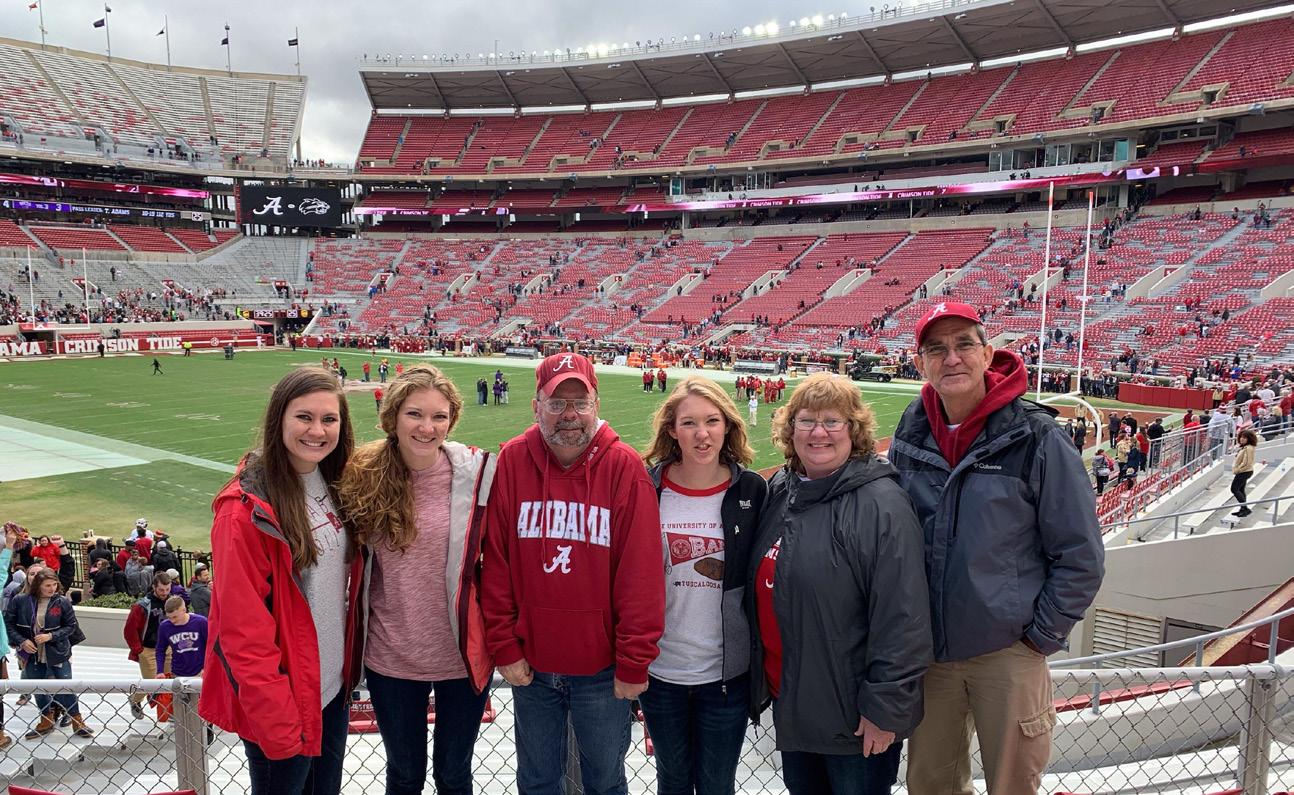
Cousins Katie, Anna and Anthony Hartley; Sarah, Teresa and Tom Mauldin at Anthony’s first Alabama football game, November 2019.
SUBMITTED by Teresa Mauldin, Crane Hill.
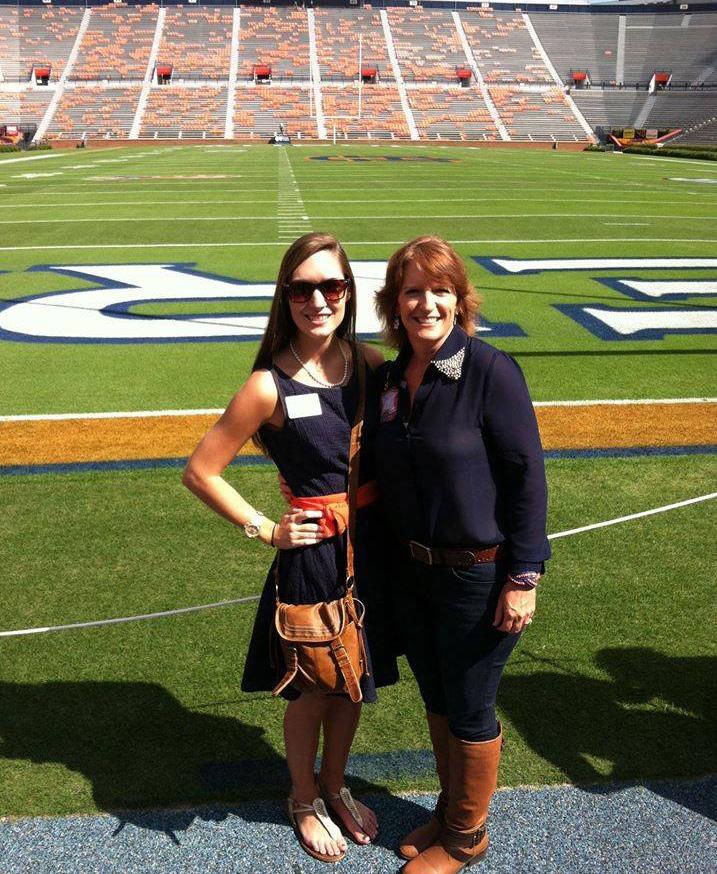
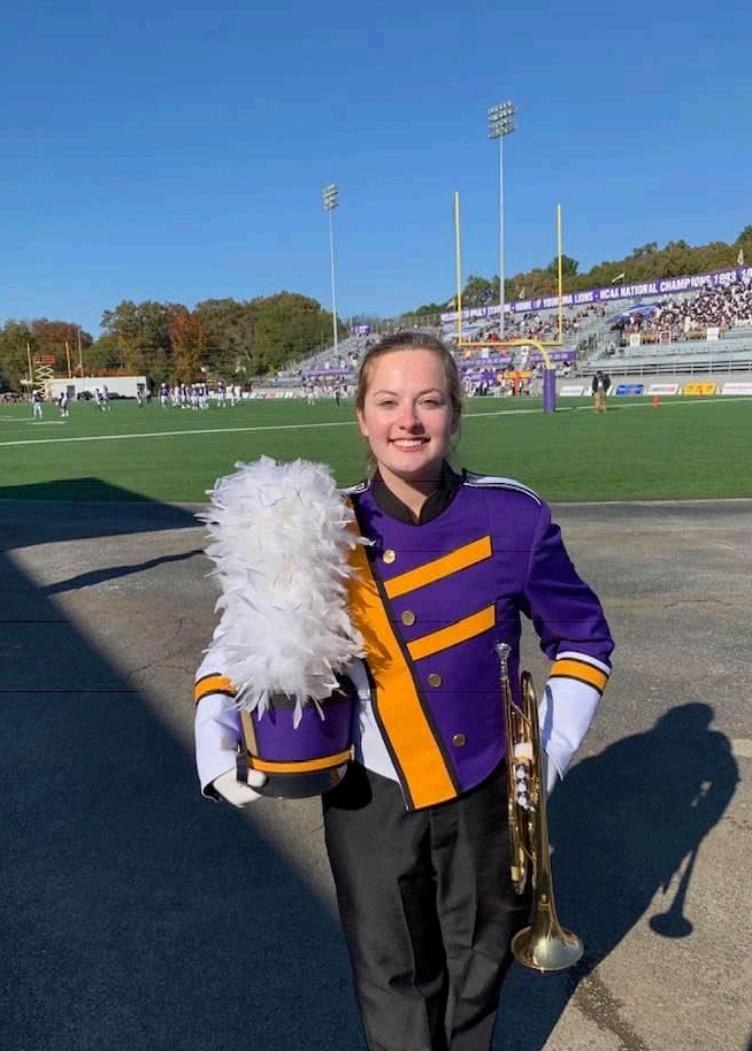

In Jordan-Hare stadium with my daughter,
Emma, for Parent’s Day. SUBMITTED BY Joy Griswold, Fitzpatrick.
Robby, Piercen and Lincoln Saint at Oriole Park at Camden Yards. SUBMITTED
BY Holly Saint, Section.
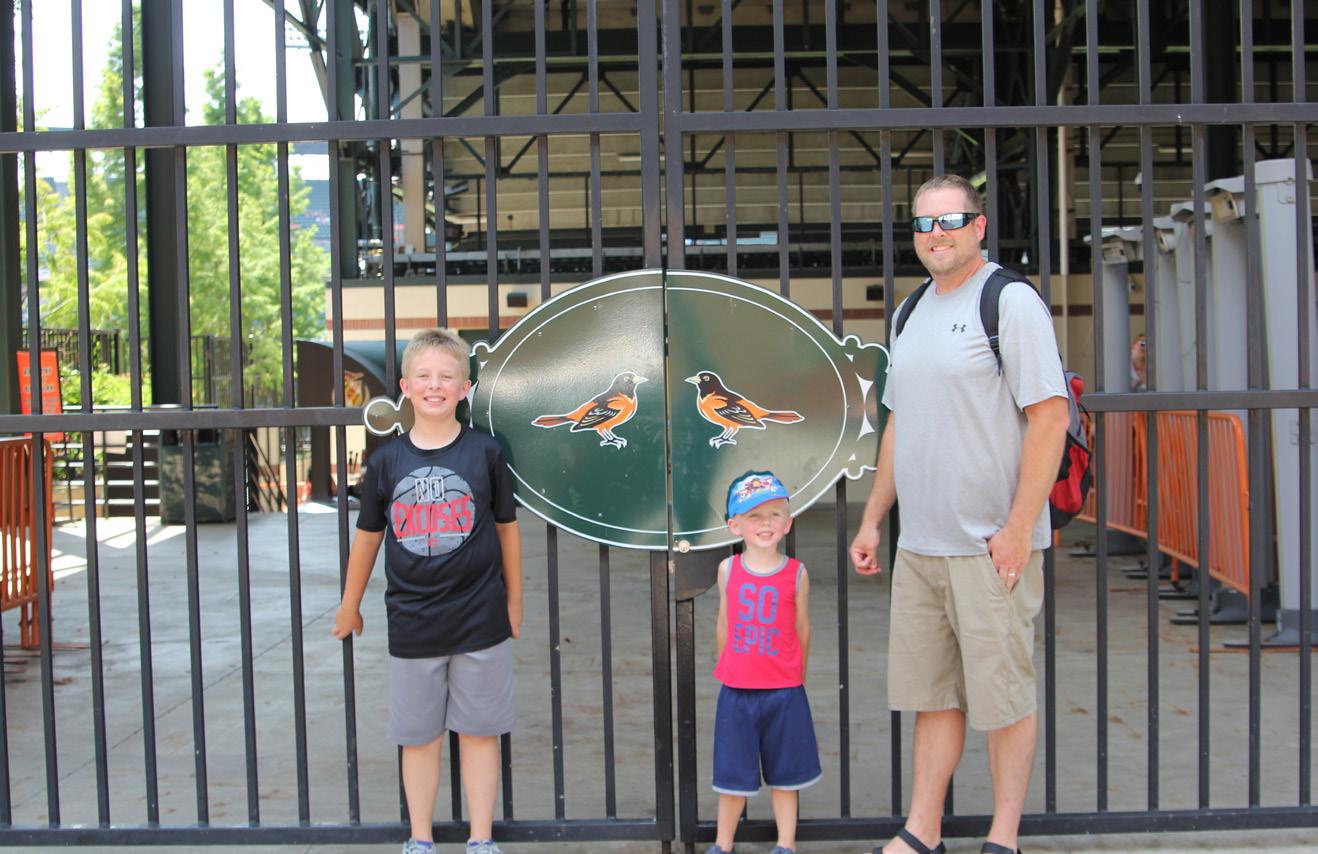
Morgan Haynes participates in the UNA Marching Band Extravaganza at Braly Municipal Stadium
in Florence, AL. SUBMITTED BY Margaret Haynes, Holly Pond.
Submit “Young hunters” photos by September 30. Winning photos will run in the November issue.
SUBMIT and WIN $10! Online: alabamaliving.coop Mail: Snapshots P.O. Box 244014 Montgomery, AL 36124
RULES: Alabama Living will pay $10 for photos that best match our theme of the month. Photos may also be published on our website at alabamaliving.coop and on our Facebook and Instagram pages. Alabama Living is not responsible for lost or damaged photos. Send a self-addressed stamped envelope to have photos returned.
Census deadline moved up; complete your form today!

The deadline for households to respond to the U.S. 2020 Census has been moved up a month. All responses are now due by Sept. 30.
With this new date comes a renewed sense of urgency and a commitment to counting all Alabamians so that our federal rep resentation, Census-derived funding and ongoing economic development opportunities stand for current and future generations.
A unique event begins Sept. 2 with the launch of the Alabama Census Bowl. This March Madness-style competition among 32 counties throughout Alabama with low self-response rates will last four weeks, ending Sept. 30. Winners will receive up to $65,000 in funding for K-12 public school systems. Keep an eye on social media for more information, or visit census.alabama.gov
First responders to be honored at parade event
Southern Preparatory Academy will hold a first responder and 9/11 memorial parade at 10 a.m. Sept. 10. The academy is located at 174 Ward Circle in Camp Hill, and the event will take place on the parade field.
First responders from all over Alabama are invited, and the guest of honor will be Alabama Speaker of the House Mac McCutcheon. Light snacks and refreshments will be served.
Because it’s an outdoor event, organizers feel that guests will be able to social distance responsibly. Guests are asked to wear a facial covering and/or keep their distance from those who are not in their household. For more information, call 256-675-6269 or email lily.kowtko@southernprepacademy.org
Motorcycle ride commemorates Trail of Tears
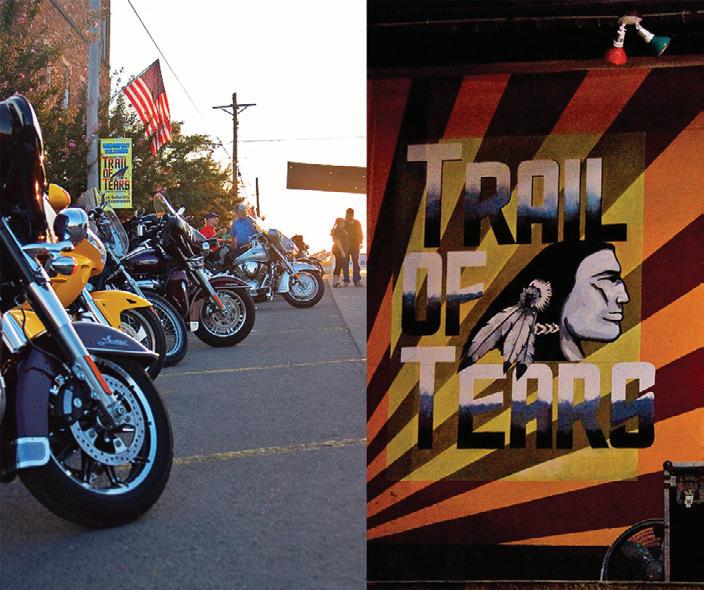

The 27th annual Trail of Tears Commemorative Motor cycle Ride welcomes the community to a kickoff party on Friday, Sept. 18.
Beginning at 3 p.m., guests will enjoy food, vendors, door prizes and bounce houses lined up on Alabama Street in Bridgeport, Alabama. The headliner concert begins at 8 p.m., with fireworks at 9 p.m.
The next day, Sept. 19, bik ers will line up in downtown Bridgeport for their ride to Waterloo, Alabama. This an nual ride brings awareness to the Trail of Tears route brought on by the Indian Removal Act of 1830. For more information, visit al-tn-trailoftears.net
Space Camp reaches goal, but continues fundraising
The U.S. Space and Rocket Center in Huntsville, home of the renowned Space Camp program, launched an effort in late July to raise $1.5 million to sustain museum operations and be able to reopen Space Camp in April 2021. In just a week, the Save Space Camp campaign reached its goal.
The COVID-19 pandemic has had a devastating effect on the Rocket Center, which closed March 13, 2020, in keeping with state health orders. The museum reopened in late May, but with far fewer than normal visitors. Space Camp did not reopen until June 28, and then with only 20 percent of its usual attendance. It will again close for weeklong camps in September.
The Rocket Center is continuing to ask for support for the campaign. Any amount over the initial goal will be used to off set losses due to the COVID-19 crisis and for programming. For more information, visit savespacecamp.com
Whereville, AL
Identify and place this Alabama landmark and you could win $25! Winner is chosen at random from all correct entries. Multiple entries from the same person will be disqualified. Send your answer by Sept. 9 with your name, address and the name of your rural electric cooperative. The winner and answer will be announced in the October issue.
Submit by email: whereville@alabamaliving.coop, or by mail: Whereville, P.O. Box 244014, Montgomery, AL 36124.
Contribute your own photo for an upcoming issue! Send a photo of an interesting or unusual landmark in Alabama, which must be accessible to the public. A reader whose photo is chosen will also win $25.

August's answer
This artwork was created by artist Heath McClain, a Vinemont native, and was unveiled in late 2019 at the Art Park in Cullman. The work is the centerpiece of the Art Park, formerly known as City Park, at the corner of Main Avenue Southwest and Second Street Southwest. (Information from Cullman Tribune) (Photo contributed by Jesse Waldrop of Cullman EC.) The randomly drawn correct guess winner is Katie Loyd of Cullman EC.
Find the hidden dingbat!
We definitely let the sunshine in for the August dingbat challenge, and more than 600 of you correctly found that sunburst on Page 28 in the illustration of common air leaks in a home. More and more folks are writing us poetry to tell us of their discovery, including Hazel Taylor of Tallassee:
In Alabama Living it was a lot of fun, Looking for a beautiful bright August sun. And as I looked on Page 28 and saw the “Energy Star” Lo and behold, there you are. But never mind, too bad! Is this August sun in an ad? Well, maybe I’m wrong about that. It still looks like the dingbat.
Take us along!

Thanks to all our readers who’ve sent us photos of their travels. We realize due to the pandemic, no one’s doing much traveling these days due to the statewide “safer at home” orders, but we enjoy seeing your pictures from past travels. Send them to mytravels@ alabamaliving.coop. Please include your name, hometown and electric cooperative and the location of the photo.
We’ll draw a winner for a $25 prize each month, so let us hear from you!
On a recent trip to Hell Road in West Bay, Cayman Islands, Bill Dillard of Arley says he “took Alabama
Living to Hell and back!”
Bill, we’re glad you got back home safely! He’s a member of Cullman EC.
Meredith Sharlow, granddaughter of Robert and Jeneanne Sharlow of Hartselle and members of Joe Wheeler EMC, took our magazine to the summit of Mt Haleakala on Maui.
Sandy Hodges of Irondale went all the way with her copy of Alabama Living to Lucky Peak Reservoir in Boise, Idaho in February. One of her sons works for TVA.

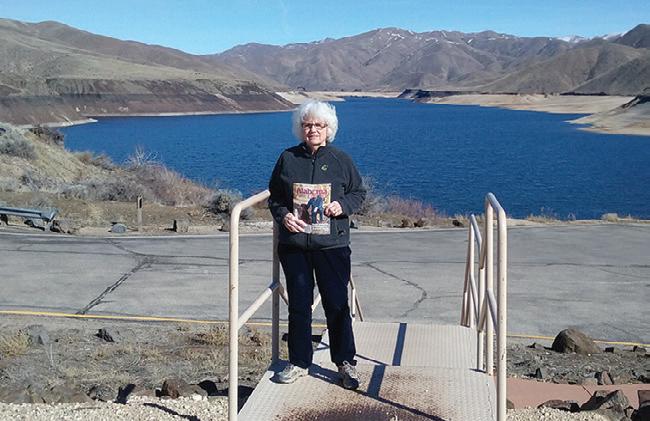
Charlotte Graves of Collinsville and a member of Sand Mountain EC is pictured during a visit to Yellow Creek Falls Fish Camp near Leesburg, Alabama.
Courey Hopkins of Andalusia is a big fan of the “Find the Dingbat” contest. “Every issue, my family and I compete against another to find the dingbat,” Courey wrote us. “It’s become quite the tradition. So good to have wholesome entertainment during this time of uncertainty. Keep up the good work!”
This month’s winner is Jane Thurman of Foley, a member of Baldwin EMC, whose name was drawn from the correct answers for the $25 prize.
This month, we’re hiding a freshly sharpened pencil, something all our school children going back to school will need (whether in person or in a virtual classroom), so happy hunting! The deadline is Sept. 9.
By email:
dingbat@alabamaliving.com

By mail:
Find the Dingbat Alabama Living PO Box 244014 Montgomery, AL 36124
Letters to the editor
E-mail us at: letters@alabamaliving.coop or write us at: Letters to the editor P.O. Box 244014 Montgomery, AL 36124
Enjoyed ‘Poutin house’ column
Thank you for your recent article (“Everyone needs a ‘poutin house,’” Hardy Jackson’s Alabama, July 2020). I enjoyed it so much as you described both your mother and father, and just like a good son, you covered both characters fairly! You are so correct. We all need our private pouting corner. Mine is my back porch, “My Poutin’ Porch,” as I now call it!
Patsy Hagan
Reform
Liked August issue
I write to compliment you, everyone on staff, for your consistently excellent publication. It is a cover-to-cover must-read every month. While I have not always enjoyed the pen of CEO Gary Smith, I have always read him, and considered his declarations.
The August issue is particularly well done. The piece by Mr. Smith is poignant, thoughtful and inspiring. In these uncertain times, this is exactly the remedy for our present malaise. The gentleman may not have sought my good opinion, but he has certainly won it.
Cheryl M. Kittrell
Fairhope
Editor’s note: The column by PowerSouth President and CEO Gary Smith appears in editions served by PowerSouth Energy Cooperative and can be viewed on our website in the August digital edition at https://alabamaliving.coop/latest-issue/archives/.
A Southern lady shares her kitchen with the world

Story by Allison Law; photos by Sincerely Shawna Photography
It started out simply. Brenda Hicks Gantt – re“I think the coronavirus, and it is a terrible tired educator, grandmother of five and seathing, but I think good’s coming out of that too,” soned home cook – set out to make a quick vidshe says. “Families are learning that they can sureo to show some young women at her church how vive together in the house for more than a day, easy it is to make homemade biscuits. and they’re not rushing around to get to ball
With one hand in a flour bowl and her phone in games and dance recitals. the other, Gantt made a four-minute video, show“People are stuck inside, they’re bored, they’re ing how to make what her late husband George watching videos on their phones, and I came up. called “two-bite biscuits.” She put the video on her And I was teaching them something. (And) they personal Facebook page, and the church ladies say they like my smile!” were thrilled. Her style resonates with fans, many of whom
They shared the video, and then others shared say she reminds them of their grandmother. Meit. In two weeks, it’d hit one million views. lissa Gaines of Fort Payne says the biscuits video
Friends and newly-found fans started asking was the first one she watched and brought back her to make other videos: how to make cornbread, sweet memories. or chicken and dumplings. A lifelong educator, “(Her baking) is similar to how my Nanny she liked the idea of teaching others, so her sonmade them,” Gaines says. “I’d give anything to be in-law created a Facebook page for her, “Cooking back in that kitchen with her, and Mrs. Gantt’s with Brenda Gantt,” to keep the videos separate cooking takes me back.” from her personal page. (She figured her local The COVID-19 situation may have had anothfriends “don’t want to see all this stuff. They just er consequence that has widened her popularity, know me as Brenda, who likes to cook.”) though sadly so. “I think there’s a lot of lonely
The biscuit video was the first video posted. She people out there,” she says, noting that many olddoesn’t remember what the next one was, but it er folks may not have a spouse to share their days was just the beginning. The combination of her with, and they are likely isolated by restrictions on simple recipes, folksy charm and antiques-filled dining out and church gatherings. “I think they’re country kitchen struck a chord with fans of all hurting and lonely, and they need to know how to ages. As of early August, her page had more than cook. I think that’s it. It’s not my cooking, and it’s 800,000 followers. not my recipes. They can look in a book and get a
That’s just since April. recipe. It’s the interaction they’re craving.” And she talks right to the viewers. While doing Timing is everything the more monotonous chores, like chopping veg
Gantt, a member of Covington Electric Coopetables or working dough, her sunny nature fills erative, never expected her videos to take off. Her the time. “What have y’all been doing today?” Or, timing, though she couldn’t have predicted it, was “Did y’all do your Bible study today?” exquisite. Stuck at home with little to do due to Or she shares what she’s been up to: Maybe COVID-19, adults and children alike were discov she’s getting ready to have dinner with her daughering her down-home cooking style, served up with ter and her family, who are just a golf-cart ride a side of humor and an appreciation for the trea through the woods; or perhaps she’s been to “The sures of life – like family and tradition – that somePig” and saw some friends while stocking up on times seem to have escaped our modern society. buttermilk, shortening and self-rising flour, the
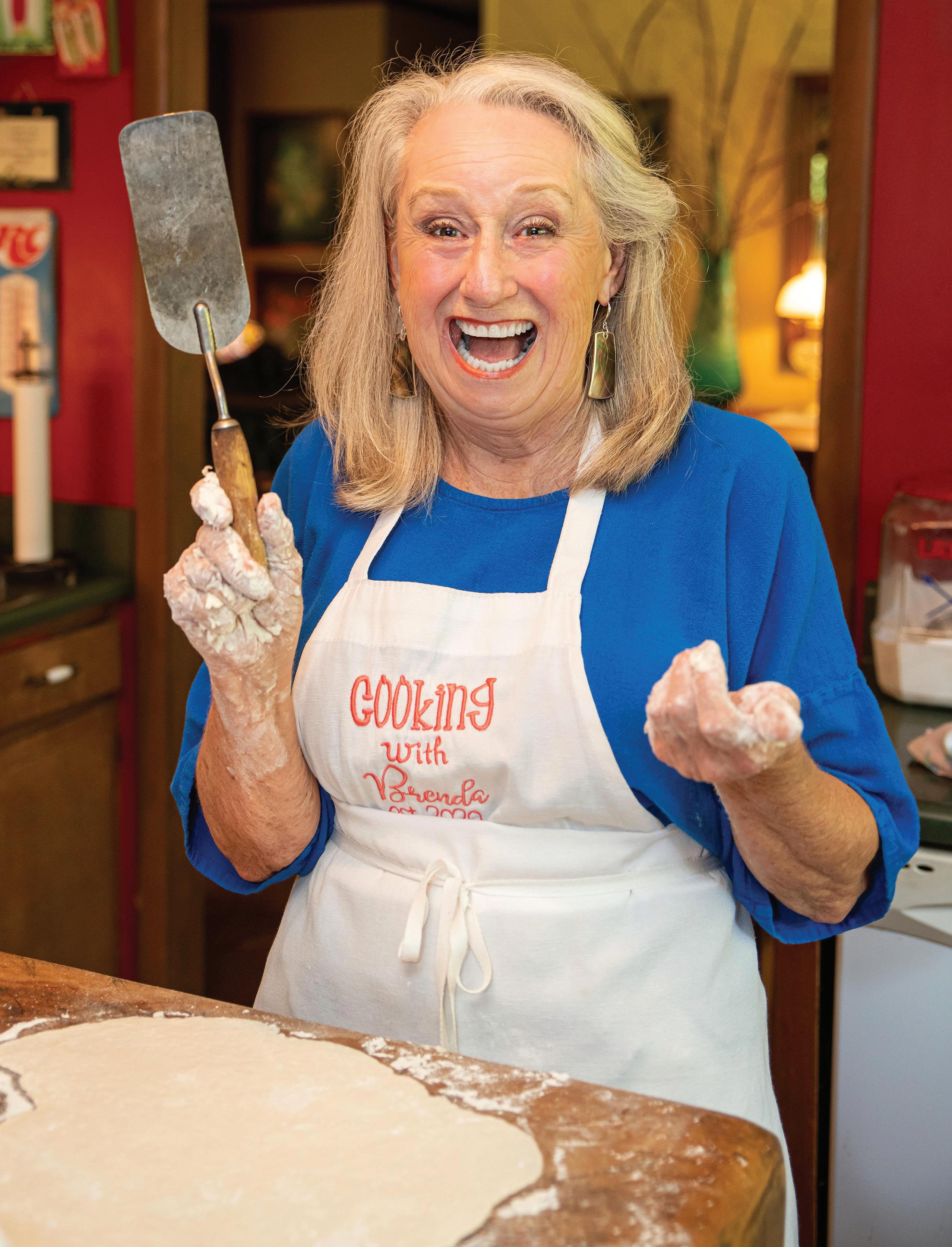
only ingredients needed for her now-famous biscuits. Usually, she makes the videos all by herself, with the help of a holder for her smartphone. Every so often, one of her granddaughters helps out.
The viewers feel like she’s talking to them, and they love it. “The other day I told them, ‘I burned this, and it’s your fault!’” she laughs. “I was so busy talking I burned the cornbread.”
Seriously though, she does feel a responsibility to her fans. “My prayer has always been, and it still is, to help me be a good influence on the people that I meet. That is important, to be a positive influence, and I’ve always asked God to give me that.”
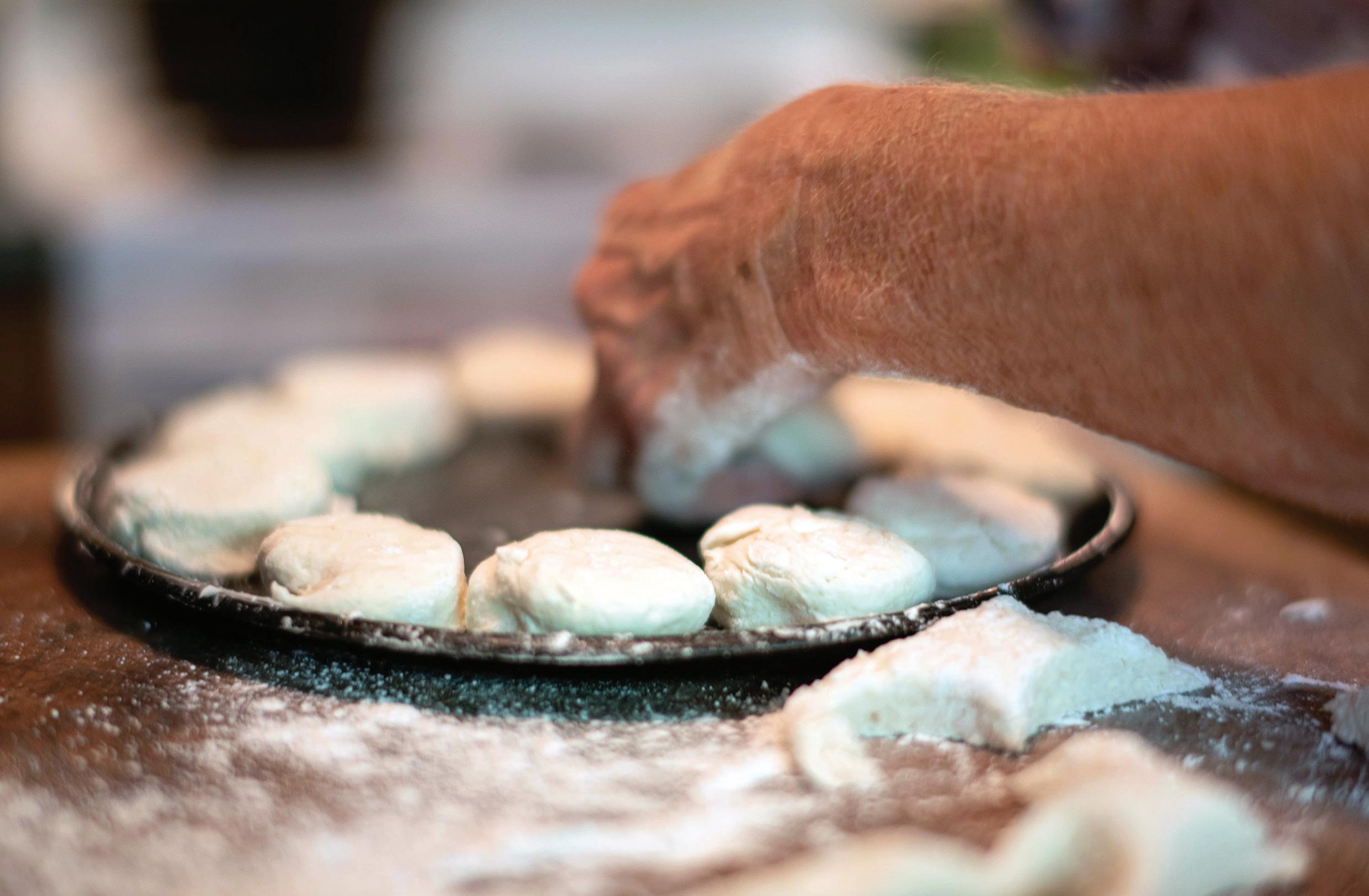
Creating a community
Gantt now realizes that not everyone had the same kind of upbringing she did; she learned to cook from her mother, who she says was “an excellent cook.”
“If she was in the kitchen, she made me be there. I may be sitting at the table, or stirring something, or shucking corn. I may not be cooking, but I had to be in the kitchen.” She raised her children the same way, and now her grandchildren, too, who all know how to cook.
But she had no idea that people didn’t know things that are second nature to her: The difference between all-purpose and self-rising flour. How to properly fry vegetables. Or how to cut up a chicken.
“I’m not trying to perform; I’m actually trying to help them to cook. It’s not hard. But so many have written and said, they didn’t ask their grandmother what to do, and their mother didn’t let them in the kitchen.”
They feel like they’ve known her all their lives, and they tell her so. Any one of her videos can easily garner 30,000 “likes” and 10,000 comments. She tries to read as many as she can, but she can’t answer them all.
Many of the comments are personal and touching. “If somebody’s in a problem situation, like they have cancer, (they say) that I really cheer up their day. Or they’re not able to walk because they’ve had a stroke, (they say), please don’t quit videoing, because it makes our day. They say they tune in every morning, because they want to see if I’m on there yet. They call me ‘Miss Sunshine.’ Just sweet. They write sweet stuff, they really do.”
It’s surprised her a bit that her fans have sort of created their own community, and she encourages the interaction. If someone has a question, often another fan will chime in with an answer or suggestion.
Even with so many Facebook followers, she resists the idea that she’s a social media influencer, even though just a small mention in a video can cause a sensation. Her mention of a particular meat seasoning, created by some friends of hers, sparked such a demand that the company couldn’t keep up with orders.
As for the future, Gantt is modest, and is committed to staying near her family and her home, which she and George built nearly 50 years ago. “I’m just going to cook. I’m just going to keep on doing what I’m doing.” Asked if she’s considered doing a cookbook or some other venture, she says she’ll have to think hard about that.
The sudden notoriety has taken some getting used to.
“I’ve only been doing it for two months,” she laughs. “I’ve got to adjust to it. It may just blow over. You know? And that’s OK too! This is OK. Any way it goes, it’s all right with me.”
She references God, which she often does in her videos. “As long as we’re in His will, and doing what His will is, He’s going to bless it and everything will be fine. It’s when we get out of His will that things fall apart. So I’m just going to keep doing what I’m doing.”
Clockwise from left: Brenda Gantt makes her homemade biscuits on the skillet and butcher block that are very familiar to her fans. A vintage wooden ammo box holds her treasured recipes, alphabetized and numbered so she can find them quickly. Some of her well-loved recipes. Gantt in her back yard; she’s a master gardener and enjoys growing vegetables and flowers.
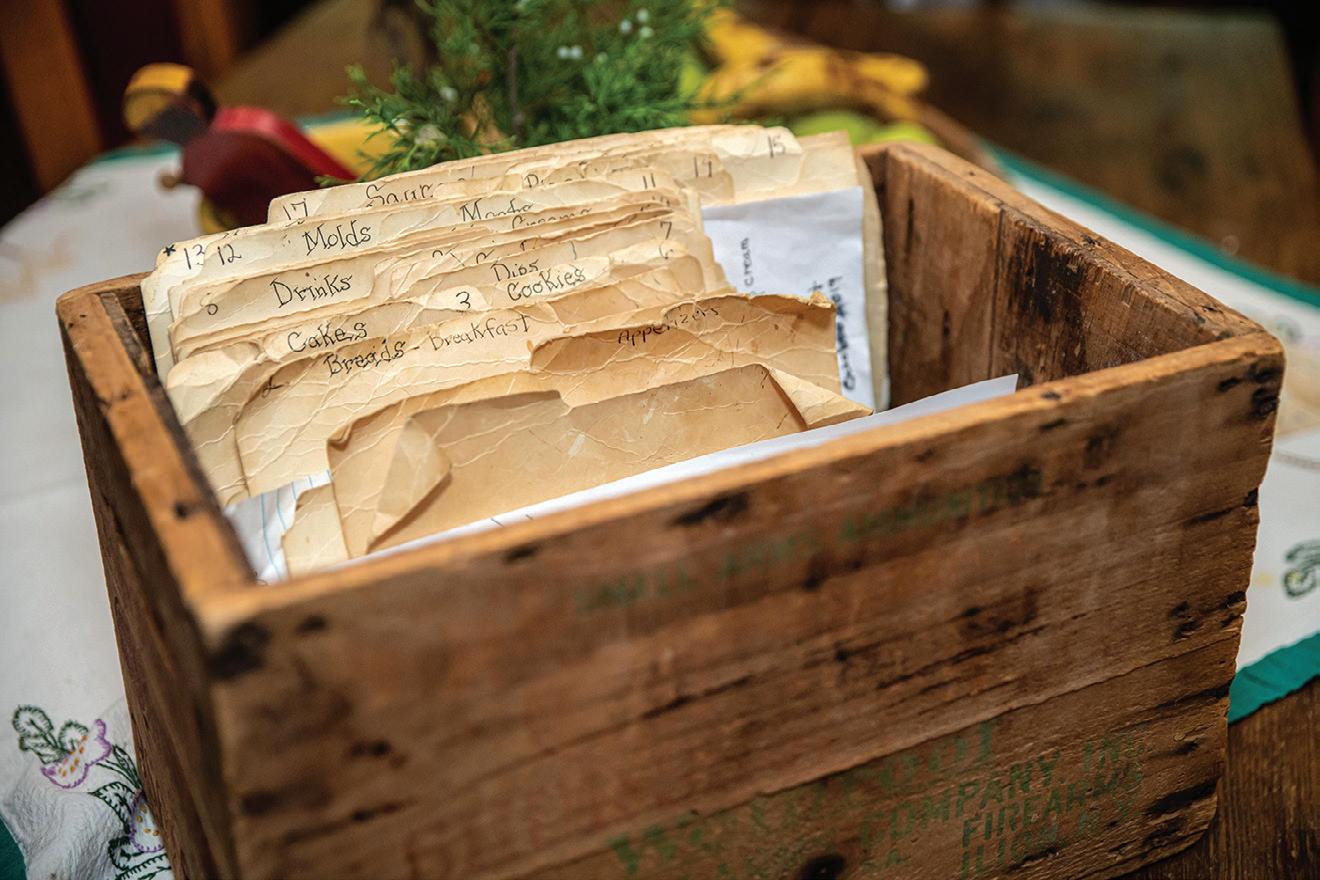

A new chapter

Brenda Gantt, 73, may be re- tired, but she’s far from the rocking chair. “People ask me how I have so much energy. But the fact is, ener- gy begets energy. If you sit, it’s not going to work.”
She and her late husband, George, both loved antiques and collected them all their lives. After she retired as an elementary school teacher, they opened an antiques store in a structure near their Covington County home.
After Hurricane Opal stressed the trees on their property, they decid- ed to use the wood to build Hickory Ridge Lodge, which became a pop- ular venue for weddings, reunions and other events. For one event, Gantt cooked for 350 guests – and did all the cooking herself.
Then they decided to open the Cottle House (hickoryridgelodge. com/cottle-house), also on their property, as a bed-and-breakfast, and business has picked up since Gantt started doing the videos. And she runs it all by herself – han- dling the bookings, entertaining the guests, cooking and cleaning.
“We really worked our whole lives,” she says. She closed the antiques store after George died in 2018; her heart just wasn’t in it anymore. But that was just the be- ginning of a new chapter.
Pigskin parodies By Jack West SEC football fan-inspired videos attract thousands
Whether it’s a Tennessee fan nearly getting KO’d by a 38-30 loss to Georgia State or Alabama learning that they’ve been kicked out of the Playoff
Club, the creative minds behind “SEC Shorts” continually find ways to poke fun at every team in the Southeastern Conference.

Josh Snead, left, and Robert Clay live and work in Birmingham. Together they create “SEC Shorts”, an online and televised video series that parodies fandom and follows the ups and downs of weekly college football.
ALL PHOTOS COURTESY SEC SHORTS
In one week, each SEC team gets a wish from a fairy godmother, and in another week, Florida mourns the loss of their hopes at win ning the SEC East while Arkansas mourns the loss of their entire football program.
Scrolling through the “SEC Shorts” YouTube page, viewers get a healthy mix of satire, homage and original concepts. Over the past five years, they have made videos that either mimic, satirize or pay tribute to everything from medical dramas to “Blue’s Clues.”
Robert Clay and Josh Snead are the two Birmingham-based film makers who created “SEC Shorts”.
Clay grew up in Birmingham and attended Auburn University, and Snead spent his childhood moving around a lot before enroll ing at The University of Montevallo.
After leaving Auburn, Clay earned a master’s degree in film from the University of New Orleans, and Snead “got (his) master’s in life.” Years later, the two met while working for a video production company.
“We edited medical lectures together,” Snead says. “Just disgust ing, the grossest thing you could think of medical lectures. So, for like eight hours a day, we’re looking at the grossest thing. Naturally, we were trying to find some sort of creative outlet to do something.” That outlet first came in the form of short films and videos the two made for fun.
Then, in 2014, they heard about an opportunity on The Paul Finebaum Show for fan-submitted videos. According to Clay, most of the entries were self-filmed rants about football, but the two de cided to try to make something with a little more polish and some more humor.
It worked.
Five years later, “SEC Shorts” has become an independent pro duction which routinely puts out videos that garner hundreds of thousands of views.
Now that they make videos about bowl games instead of bowel pains, the two work to connect with viewers across the Southeast.
Connecting with fans
The ultimate goal of the videos, they say, is to connect with football fans across the region by getting people to identify with their content.
“We try to make our content very identity-based,” Clay says.
“If someone watches it, we want them to say, ‘’Oh, that was me watching that game,’ or ‘That’s funny, I relate to that.’”
For Clay and Snead, who are Auburn and Alabama fans re spectively, the goal is to find the overarching narratives that a team or the conference goes through every year.
“[We ask] how did their season go last year?” Clay says. “How is their season going up until this point where they beat a num ber two ranked Georgia? Then, you’re able to turn that around and try to get in their heads a little bit.”
That’s easier for some teams than others.
“It’s a lot easier if a team is doing either really, really well or really, really bad,” Clay says. “I think it’s about trying to dive into the bigger scenario, and instead of just looking at it in terms of what happened this last game, you look at it from the perspec tive of what’s the pattern and how long has it been going on for.”
Keeping positive despite the pandemic
But with the COVID-19 pandemic continuing to worsen across the South, there is a possibility that Bryant-Denny and Jordan-Hare remain largely empty this year. Home to more pi geons than pigskins.
However, Clay and Snead say that while a canceled football season might be bad for their business model, it has helped them
Above, Snead and actor Jessica Clark play two Oklahoma fans who have to tell their daughter that the Okies’ chances of winning a national championship have “gone to live on a farm up north...” Below, the “SEC Shorts” Team after finishing a video.


connect with more people.
“I feel like the positive we discovered is that all of a sudden, you have everyone going through the same thing, and you have a lot of ability to connect with a big ger audience,” Clay says.
In May, the two put out a video where a satirized Brit ish adventurer Bear Grylls teaches football fans how to survive in the wilderness that is a fall without college football — a situation, fake Grylls says, which is even more difficult than being a Tennessee fan for 24 hours.
In June, they dug into some historical content with an episode where the SEC teams of 1998 got their perfor mance reviews. And in July, a “Blue’s Clues”-like kids’ show introduced viewers to Nebraska, Michigan and Texas — the blue-blooded college football dynasties that “haven’t been able to sustain a modicum of success in over a decade.”
However, the two admit that archival dives and wilder ness survival shows won’t be able to sustain through the cold winter that is a fall without college football.
“I think for a little while you could get away with ‘It sucks to have football season’ type of videos, but you can only do that for so long,” Snead says.
Of course, if the pandemic refuses to let up, and football is canceled indefinitely, Clay and Snead have a dry-humored backup plan.
“I wonder if they’ll let us edit medical lectures again,” Snead asked. A season without football would certainly be a huge difference for Snead and Clay. With games usually taking place all-day Saturday, the two basically have to spend all of Sunday writing, shooting and editing a video to be ready for Monday.
“Sundays are a blur in the football season, and it just goes by so fast because you’re just constantly moving on to the next one,” Clay says. “You’ll make a video, and you’ll both be like, ‘Oh we really liked that one! Oh, it doesn’t matter, we’ve got to go to the next one.’”
The rush, the two say, is because they are trying to par ticipate in a regional — and occasionally national — conversation.
“I think that’s the best way to capture the moment,” Snead says. “All of our videos are based on what hap pened the day before. So, we want it to be up there on Monday morning when people are talking about it at work or school or whatever.”
It’s those water-cooler and homeroom discussions that Snead and Clay are trying to be a part of. The problem is that they don’t always have much of a shelf life.
“When we were doing them, we noticed that there’s this huge — it’s small — but this huge window of oppor tunity to capitalize on people discussing the games,” Clay says. “So, if you can, get it up by Monday morning. By Wednesday, people are looking ahead to the next game.”
And when fans begin to look ahead to the next game, Snead and Clay have to start looking ahead to the next video.
But the two say that this rigorous schedule has defi nitely paid off.
“Well, my car has arm rests on it now, that’s probably the biggest improvement,” Snead says.
Josh Snead, bloodied and bruised, shows how hard it is to be a Tennessee football fan.
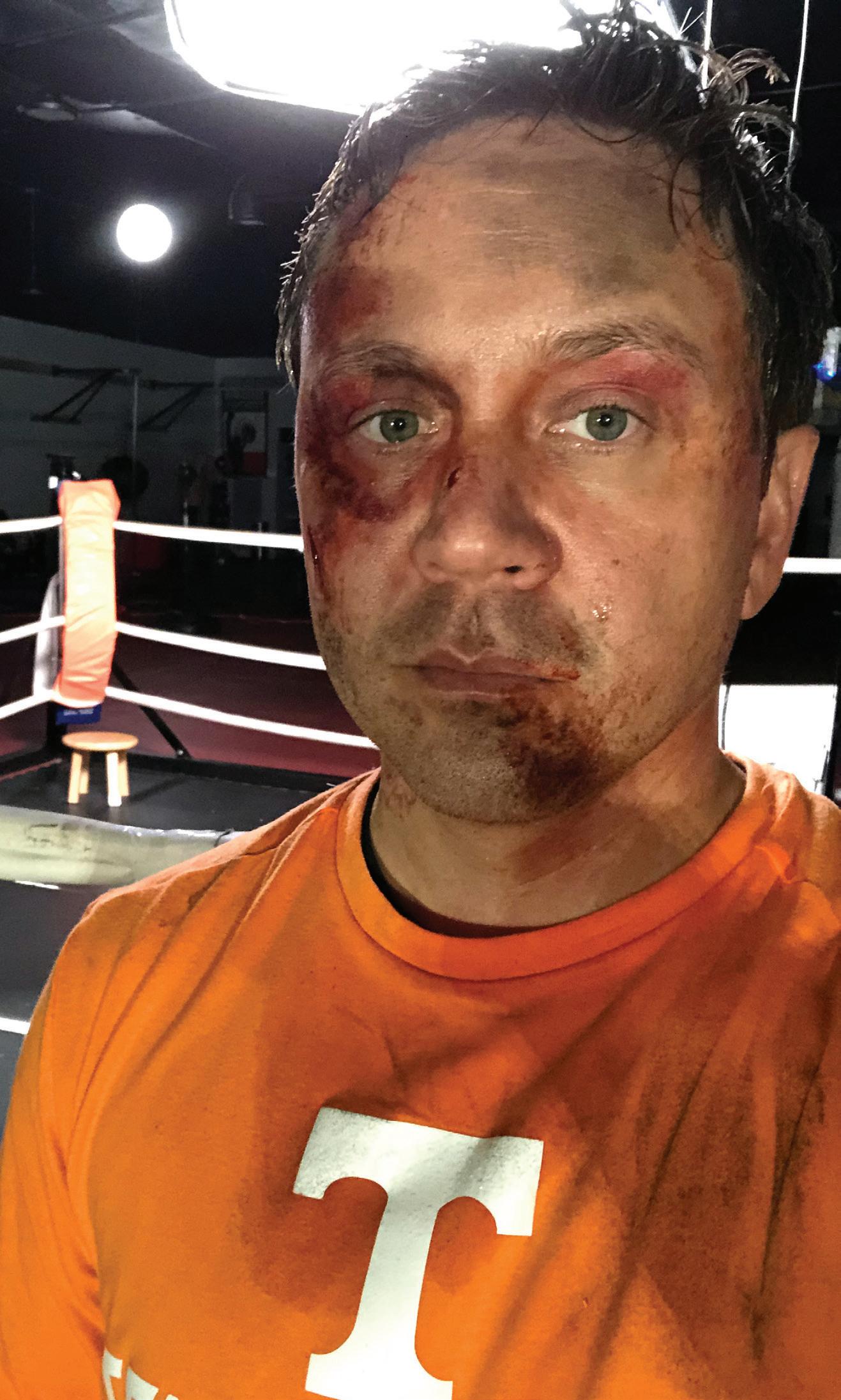
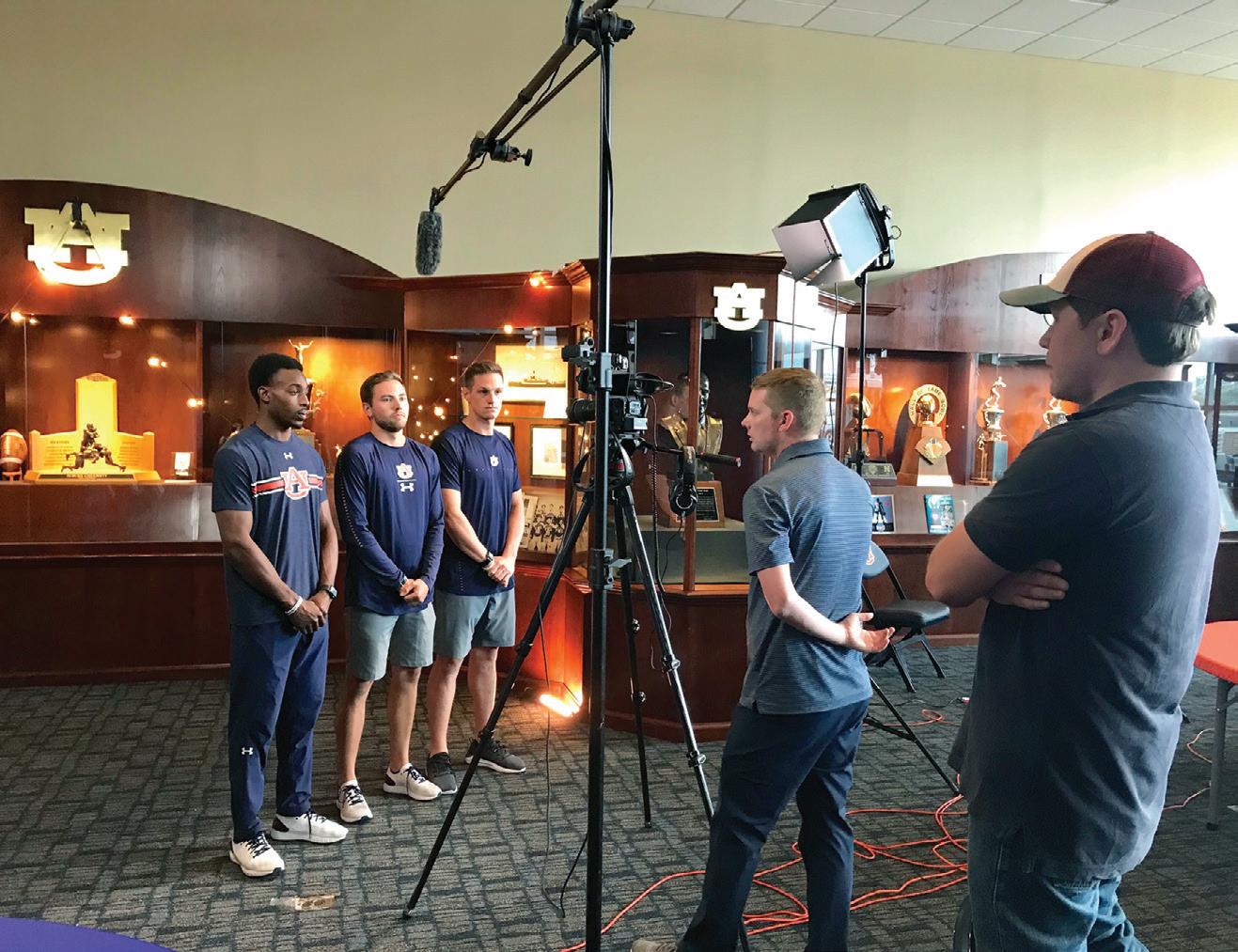
The crew of “SEC Shorts” directs some Auburn players.

Where the eagles fly Training is rigorous for Auburn mascots who represent heritage, tradition
By Emmett Burnett
Behind a Lee County security gate, down a winding forest path, resides a noble flock. Birds of prey live here, repre senting one of America’s most famous mascots. They are the few, the proud, the War Eagles.
Perhaps you watched in awe as the proud bird soared through Jordan Hare Stadium. It is more than a show. “War Ea gle” represents Auburn University’s heritage, competitive battle cry, and often replaces hello and goodbye as salutations.
The winged wonders reside and train at the Southeastern Rap tor Center, about two miles from campus. Auburn’s raptors of renown are impressive during televised football games, but you should see one up close. The Center’s Andrew Hopkins does, ev ery day.
“Eagles are bigger than most people imagine,” Andrew says, hoisting Aurea, a golden eagle, on his arm. Almost on cue, she stretches her 6-foot wingspan as a reporter’s jaw drops.
Auburn’s current four eagles consist of three in its frequent fly er program and one retiree. They originally joined the program with injuries prohibiting a return to the wild.
Aurea flew in most of Auburn’s 2019 football pregame shows. Spirit, a bald eagle, is her alternate. The new kid and trainee is also a bald eagle, Independence (Indy). The only male on the list is Nova, the retiree golden eagle who dominated Auburn skies from 2012-2016.
Though others participate, only golden eagles – the official school mascot – can hold the title “War Eagle.” Nova and Aurea are officially War Eagle 7 and War Eagle 8 respectively.
For active duty birds, training is rigorous. Don’t try this at home. Actually, you can’t. Federal laws prohibit so much as touching an eagle without a permit; Auburn’s trainers are li censed.
The instructor’s job is straightforward. All they have to do is teach a wild raptor, capable of flying 120 mph, with a wingspan that can hide a coffee table, while packing talons stronger than a lion’s jaw, to soar over 90,000 screaming fans and return. What could possibly go wrong?
“It’s all about positive reinforcement and repetition,” says An drew. “We train eagles to do what we want them to do and reward them for doing it.” The key is the lure – a circular leather pouch the birds have been trained to associate with food.
“To them, it’s a magic button,” adds co–trainer, Auburn stu dent and Mobile native, Amanda Sweeney. When the beak pecks the pouch, food follows.
On day one, the wild bird is taught to perch on the handler’s arm. Once that task is mastered, War Eagle Class moves offsite to Jordan Hare Stadium.

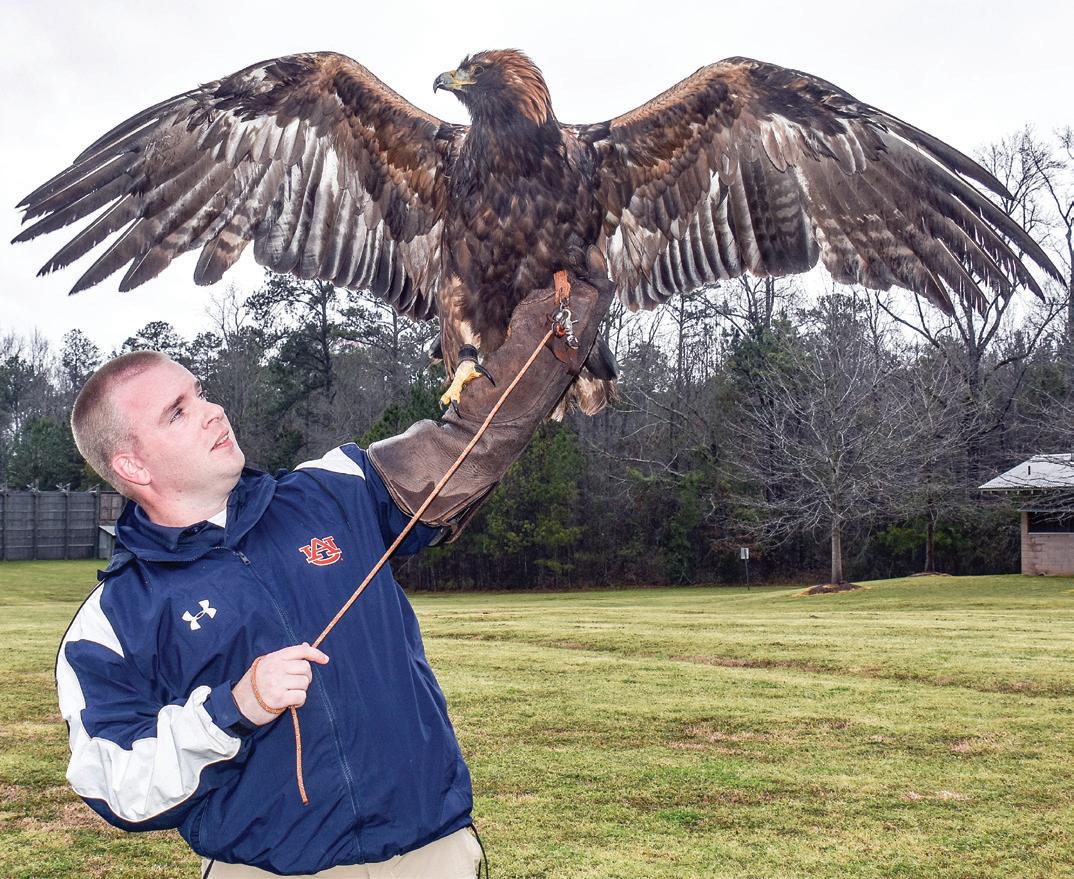
War Eagle thrills the crowd prior to an Auburn University football game. PHOTO COURTESY OF AUBURN UNIVERSITY
Where the eagles fly

“We start with little steps,” says Andrew. First, they place the eagle – at this point leg tethered to trainer – on the stadium’s low er ledge and teach it to hop down on the football field for food. Days later, the bird is moved higher up into the stadium. It must hop and fly greater distances for a treat.
Eventually, the task is performed from high in the stadium and the eagle now flies down the field to tap the lure to snack. “Then we start the entire process all over again,” Andrew adds. “Only this time without the tether.”
As for noise, crowd roars do not faze eagles. “We do elemen tary school shows all year,” Andrew notes, though onsite appearances have dropped dramatically during the pandemic. “Being around large crowds of school children helps acclimate our ea gles to human racket. During game shows, the War Eagle doesn’t care if the crowd is 100 or 90,000. It is totally focused on doing its job and being rewarded for it.”
At game time, three eagles assemble in the stadium. One will fly, one is the alternate, and the third is a trainee observing.
“We like the War Eagle to fly with the wind, not against it,” Andrew says. “Flying against it gives the bird too much lift.” As for weather, it will fly in drizzle rain but not in wind speeds ex ceeding 15 mph.
Before the show, a pre-flight check is completed. Decisions are made within minutes of show time if the bird is ready. “They all have quirks,” Andrew says. “You learn their personalities and work around it.”
Amanda continues, “Eagles are different by species and it shows in their flight style. In the wild, bald eagles eat fish but golden eagles prey on fast animals such as jack rabbits. They fly faster than bald eagles and hit the lure very hard.”
All War Eagles have tracking devices attached to their legs but none of them care. Once released in the stadium, it has a choice: Fly as trained and return for a yummy dead rodent, or never look back and be free as a bird. “We never know what route it will fly,” says Andrew and he laughs, “I’ve had several years taken from my life doing this.”
During training or game day performances, to date, Auburn has never witnessed an eagle escapee. “When it’s time to call it down we run out to the field with the lure,” adds Amanda. “In flight, the eagle looks down at the lure it associates with food and down it comes – hopefully to the 50-yard line.”
As of press time, all home pre-game shows are still on. “As long as there are fans in the stadium, we will fly,” Andrew says.
From release, to return, the show is over in about 90 seconds. The eagle team runs off the field. Football players run on it. Inev itably a loyal home team fan base erupts in song, “War Eagle, fly down the field, ever to conquer, never to yield.”
Aurea and company show how it’s done.
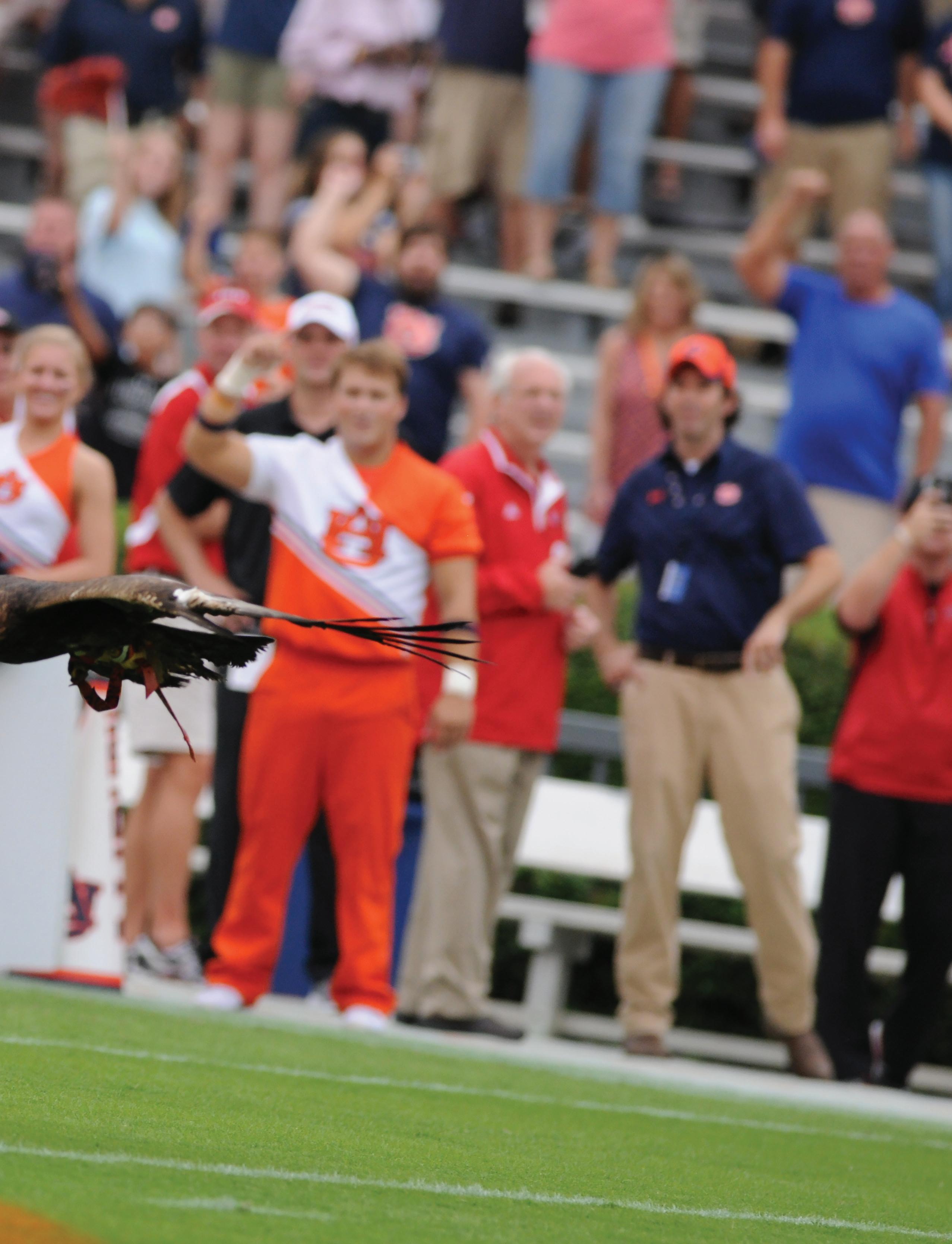

What to plant in the fall (and why)
September may signal the end of summer gardens, but it’s just the beginning of what quite possibly is the best gardening season of all.
Fall, which officially arrives on Sept. 22 (the autumnal equinox), is an ideal time for plant ing, and for working, in the garden, and this year a lot more of us will be out there doing both. According to Amy Enfield, a horticulturist with Bonnie Plants, the COVID-19 pandemic sparked an unprece dented increase in gardening nationwide. In fact, a survey conducted by Scotts Miracle-Gro showed that, from March to July, some 21 million Americans took up gardening, most for the first time ever, and apparently they liked it.
“Nearly everyone surveyed said they intend to keep on gardening and grow more next year than they did this year,” Enfield says. Lucky for all of us, next year can start now. Cooler fall temperatures and often more abundant rainfall provide perfect growing conditions for cool-sea son vegetables, flowers and herbs. Those conditions also help bulbs, lawn seed and trees, shrubs and other perennials develop stronger, deeper root systems, which gives them a jump start on next year’s growing season.
Enfield herself loves fall gardening, es pecially for growing cool-season vegetable crops such as leafy greens (lettuce, spinach and collards), root vegetables (beets and carrots) and cole crops (broccoli, cauli flower, cabbage and kale). Though these crops are often planted in the spring, En
Katie Jackson is a freelance writer and editor based in Opelika, Alabama. Contact her at katielamarjackson@gmail.com.

field said many will do better for us in the fall.
“In the Southeast, spring tends to be short and it gets really hot, really fast,” she says. “When temperatures jump from the 70s to the 90s overnight, that’s tough on early spring crops.” And, as temperatures rise, many cool-season plants bolt (pro duce flowering stems) too early and develop bitter flavors.
“The benefit of fall is that your soil is al ready warm, but temperatures are cooling off,” Enfield explains. “Cool-season crops love that.” They often also respond well to cold. “When plants like kale, collards, carrots and sugar snap peas are kissed by a light frost, that enhances their sugars and they become sweeter and more flavorful.”
In addition to cool-season vegetables, Enfield said fall is a great time to grow many herbs, especially cilantro, parsley and mint. And some warm-season vegetables, such as green beans and tomatoes, can be grown well into the fall here in Alabama.
The key to a successful fall vegetable garden is preparation and attention to planting dates. Since severe cold is usual ly the greatest limiting factor for many fall vegetables, it’s important to pick varieties that either tolerate colder temperatures or can be harvested before the first hard freeze. “Look for varieties with a harvest maturi ty of 100 days or less,” Enfield says, or find out the dates to maturity of things you want to grow and count back from your area’s first expected PHOTO COURTESY ALABAMA FARMERS FEDERATION frost date to determine if there’s enough time to grow them successfully. Cutting that date close? Frost blankets or other protective covers can be used during severe cold spells to extend the life of many fall crops well into the late fall or early winter. Planting in con tainers that can be moved to protected areas during extremely cold weather is another option.
Regardless of what you’re planting, follow proper planting practices. Remove spent or dead plants, which may harbor disease and insect pests, and test your soil before adding fertilizers. Enfield recom mends turning garden soil and amending it with compost or other organic matter, too. “Whether you’re planting perennials, trees, vegetables or anything, your plants will be a lot happier for it,” she said.
There’s much more to plant and accom plished in the fall garden, so check out the websites of Bonnie Plants (bonnieplants. com) or the Alabama Cooperative Exten sion System (aces.edu) for ideas, or consult with local garden experts.
SEPTEMBER TIPS
• Harvest and preserve late summer herbs, vegetables and fruits. • Watch for end-of-season sales on plants and gardening or outdoor products. • Mow and irrigate lawns as needed. • Divide and transplant perennials. • Find and remove invasive plants in your landscape. • Plant wildflower seeds.



